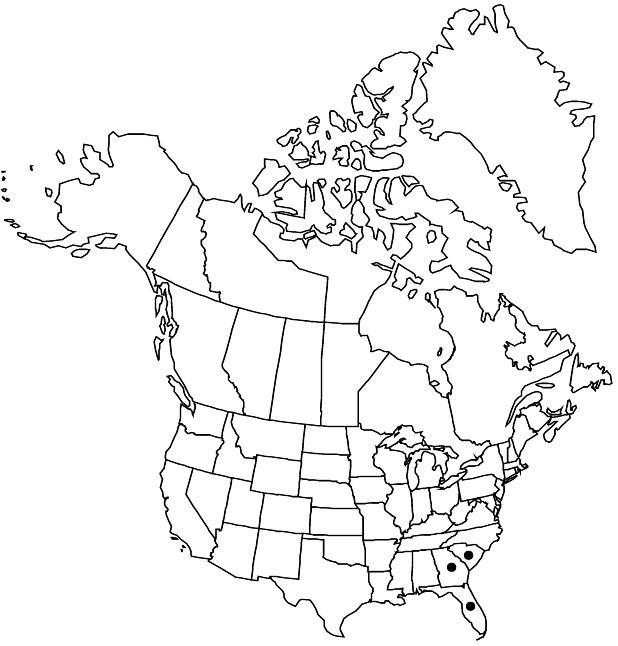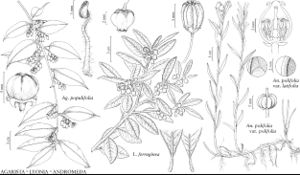Difference between revisions of "Lyonia ferruginea"
Gen. N. Amer. Pl. 1: 266. 1818 ,.
FNA>Volume Importer |
FNA>Volume Importer |
(No difference)
| |
Revision as of 20:31, 24 September 2019
Shrubs or trees, (ultimate branchlets spreading), to 6(–12) m. Stems erect, slightly angled. Leaves persistent; blade elliptic to obovate or ovate, 1–9 × 0.5–4.5 cm (those of branch apices equaling or only slightly smaller than those on lower portion of branches), coriaceous, base attenuate to narrowly or widely cuneate, margins entire or undulate, usually revolute distally, sometimes strongly so, apex acute or obtuse to mucronate, less commonly rounded, abaxial surface ferrugineous-lepidote, otherwise usually densely hairy, scales often of 2 sizes, at least smaller ones persistent, midvein and secondary veins usually at least slightly depressed, adaxial surface lepidote (scales caducous), hairy along midvein. Inflorescences fascicles, developing from buds beyond or intermixed with vegetative buds on branches of previous year; bracts 1 per flower, linear-lanceolate, 1–2 mm. Pedicels peltate-scaled, lepidote. Flowers: calyx lobes 1–2 × 0.5–1.2 mm, glabrous, lepidote; corolla white, urceolate, 2–4 × 2–4 mm; filaments 1–2.3 mm, roughened, without appendages or with 2 minute spurs. Capsules ovoid to ellipsoid, 3–6 × 3–4.5 mm, apex not constricted, lepidote, otherwise hairy; sutures separating as unit from adjacent valves; placentae subapical.
Phenology: Flowering late winter–spring.
Habitat: Pine and/or oak forests, xerophytic scrub
Elevation: 0-100 m
Distribution

Fla., Ga., S.C.
Discussion
Lyonia ferruginea is occasionally used as an ornamental; its stems are used in the manufacture of artificial foliage plants for use in interior design; it and L. fruticosa are most closely related to the lepidote species of Mexico and the West Indies. This species is probably reproductively isolated from L. fruticosa due to its flowering time (mainly February through May versus mainly March through July) and habitat preference (usually well versus poorly drained soils).
Selected References
None.
